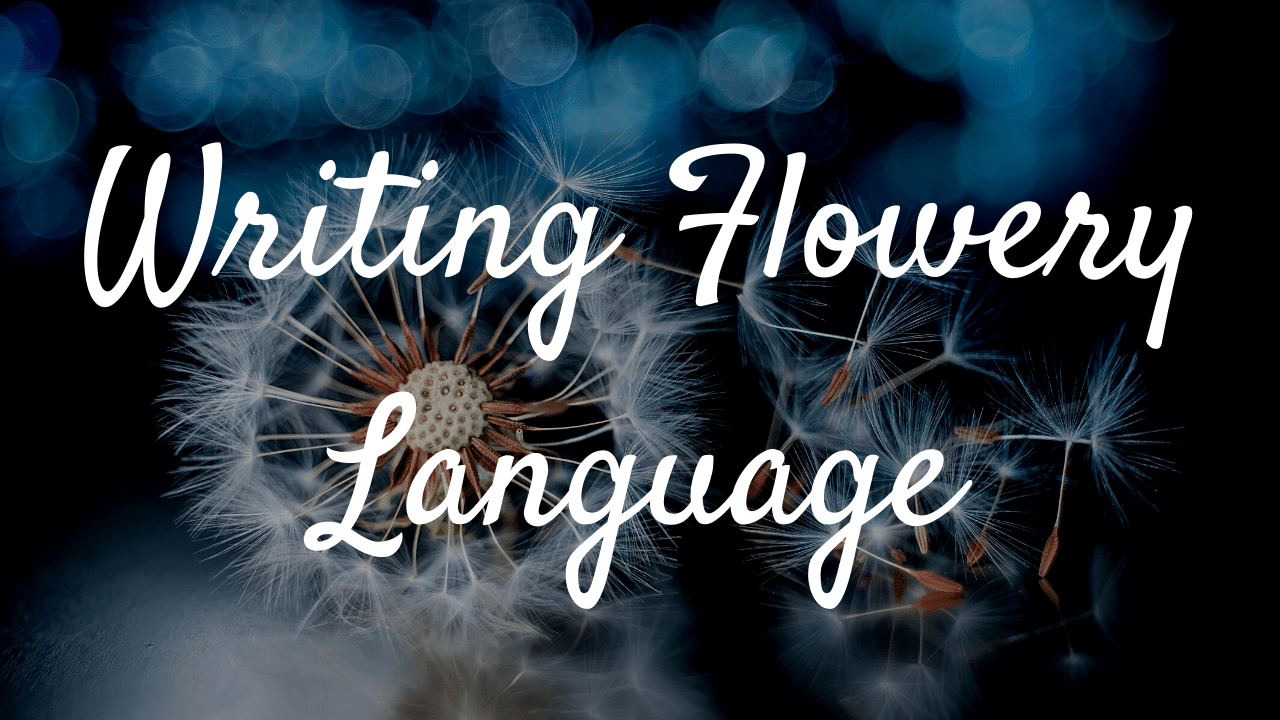As an Amazon Associate I earn from qualifying purchases.

Written by JJ Barnes
Some stories are designed to be poetic rather than focusing on a plot. However, I am more interested in stories that are about a plot and characters. Love stories, action adventures, or murder mysteries for instance. The story is the point and your audience come to you for that story. A detour to use a lot of flowery language and poetic description will get in the way. Your audience will stop reading because they’ve forgotten the point of the story and got bored.
What Is Flowery Language?

Writing flowery language is when you want to make your prose beautiful and poetic. You might spend multiple pages explaining or describing something that could be done in a couple of lines. It’s a style that some people love. However, the cost of this is that it slows your story down to a full stop. Spending a lot of time describing the light on the water distracts from the reason your character is by the water in the first place.
If you are telling a story that is about the plot more than the imagery, you have to accept that your audience will be turned off if they can’t get to the plot through the layers of poetic words.
Look over your story when you finish writing your first draft. If it’s hundreds of thousands of words long because you’ve spent pages and pages waffling about something using beautiful language but that doesn’t move your plot along at all, you might have to “kill your darlings”. And that means, be merciless with your delete button.
Focus Descriptions On Characters Feelings

Your descriptions should focus on what impacts your character, and why. They will have an emotional reaction, triggered by something in their environment. This makes it interesting and relevant to their story and who they are as a person.
If your character is in a room that they spend a lot of time in, they might focus on the smell in the air. But it’ll be related to how stagnant it feels and how they want to be free.
If they go to a river, they’ll focus on how cold the water is when they try and cross it. How the movement of the water splashes over their face when they try to swim. Think about what they’re focusing on and why. What that says about your character as a person and their circumstances, rather than trying to describe every single thing.
Your descriptions can be beautiful and include imagery that is powerful. But by keeping them to what directly impacts your character you avoid going on for so long that your audience is booted out of your story because they’re bored.
Choose Your Style
For a plot and story focused audience, going on at length with flowery language to describe relatively mundane things reads like the author likes the smell of their own farts. We get it, you’re clever.
If that’s your style and you love it, then you can find an audience who come to you for that. But you’ll have to sacrifice following too complex a plot because you just won’t have room.
More From JJ Barnes:
I am an author, filmmaker, artist and youtuber, and I am the creator and editor of The Table Read.
You can find links to all my work and social media on my website: www.jjbarnes.co.uk
Buy my books: www.sirenstories.co.uk/books
Follow me on Twitter: @JudieannRose
Amazon and the Amazon logo are trademarks of Amazon.com, Inc, or its affiliates.

